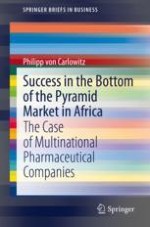2020 | OriginalPaper | Buchkapitel
4. Political and Macroeconomic Situation in Sub-Saharan Africa
verfasst von : Philipp von Carlowitz
Erschienen in: Success in the Bottom of the Pyramid Market in Africa
Aktivieren Sie unsere intelligente Suche, um passende Fachinhalte oder Patente zu finden.
Wählen Sie Textabschnitte aus um mit Künstlicher Intelligenz passenden Patente zu finden. powered by
Markieren Sie Textabschnitte, um KI-gestützt weitere passende Inhalte zu finden. powered by
